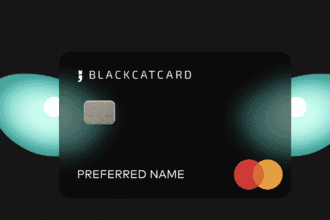
According to LexisNexis Risk Solutions’ 2024 U.S Auto Insurance Trends Report, 46% of auto insurance consumers had shown frustration with lengthy claims processes. While insurers aim to balance speed and accuracy in claim management, a key bottleneck lies in the inefficiency of AI-powered systems tasked with damage detection. But why does this happen?
One common reason is poor training data. AI-powered claim processing systems depend on annotated images to detect and evaluate vehicle damages. When these annotations are inconsistent or incomplete, it leads to errors and delays in claim approvals. This inefficiency frustrates customers and disrupts insurers’ workflows.
To overcome this, precise and consistent image annotation for insurance claims is essential. This can improve damage analysis, accelerate approvals (or rejections), and transform customer satisfaction for the better. So, let’s dive in and understand more about it!
Applications of Image Annotation in Auto Insurance
Reliable image annotation empowers AI systems to identify vehicle damage accurately, improving claim processing efficiency and ensuring fair settlements. Here are some ways in which image annotation can make the auto insurance claim processing better:
Damage Classification
Leveraging techniques such as Polygon annotation, specific types of damages like dents, scratches, torn paint, and shattered parts like windows and windshields on vehicles can be labeled in the provided visuals. Using this annotated data, AI-powered systems in claims management can identify and classify a particular kind of damage for faster claim processing.
Vehicle Condition Monitoring
Annotated vehicle images provide detailed visual data on vehicle deterioration, allowing AI models to analyze wear and tear patterns over time. By comparing past and current images, insurance companies can assess real-time condition changes and adjust policy premiums accordingly.
Damage Severity Detection
By marking the extent of the impact, like deep dents, minor scratches, or total part destruction, annotated images help AI-powered claim processing systems assess the severity of the vehicle’s damage. This approach assists insurers in determining the level of repairs needed, distinguishing between minor fixes and major replacements.
Fraud Detection
Auto insurance fraud causes insurers to lose millions every year. Fraud cases include false repair claims, made-up accidents, or forged details of the accident. Annotated images of genuine and false claims can help AI-powered insurance systems identify fraud patterns and reduce the financial burden on insurers.
Underwriting
Annotated images help insurance underwriters assess a vehicle’s condition, changes, and possible risks before approving a policy, ensuring accurate coverage and fair pricing.
Challenges with Image Annotation for Auto Insurance Companies
Annotated images are critical to ensure the accurate functioning of AI-powered claim processing systems. However, several roadblocks can make the process of image annotation challenging for auto insurance firms. This includes:
Differentiating Between Damages and Shadows
Distinguishing real damages from shadows is challenging as uneven lighting can make shadows appear like dents or scratches. This can lead to mislabeling in training datasets, affecting claim accuracy by AI-powered systems. Providing proper training to annotators and implementing a cross-verification system can help solve the issue.
Handling Image Quality Issues
Often, images clicked from low-resolution cameras are blurry and pixelated. This increases the chances of mislabeling images, which further affects the accuracy of the training dataset. With HDR image processing and histogram equalization, this issue can be taken care of.
Identifying Different Models and Types
Each automobile brand and type has its unique design features and components, making it challenging for annotators to apply a one-size-fits-all approach to image labeling. The solution to the problem is creating a standardized taxonomy that provides details related to type, model, and year to minimize inconsistencies in annotated images. For example, SUV → Ford → Explorer → 2021 → Front Bumper Damage → Moderate Severity ensures consistent image annotation by defining the vehicle type, model, year, damage location, and severity, minimizing errors in auto insurance claims processing.
The in-house teams will have to employ more personnel and invest time and money to solve these challenges. Alternatively, by outsourcing image annotation services, they can get help from skilled professionals, access to advanced tools, and scalable workflows all under one roof without having to dedicate time from core business issues.
How Can Outsourcing Image Annotation Improve Your AI Model?
The image tagging and annotation market worldwide is expected to cross US $1.5 billion in 2030, driven by the growing reliance on AI applications that demand vast amounts of accurately labeled data. However, for the majority of businesses, scaling in-house efforts is tricky and thus requires outsourcing image annotation to achieve the following advantages:
Dedicated Team
In-house teams often juggle multiple responsibilities, making it challenging for them to take out dedicated time for image annotation. Outsourcing provides access to skilled professionals with qualifications and expertise in handling tasks like labeling different types of damages. They specialize in techniques like bounding box labeling, semantic segmentation, and polygons annotation, ensuring high-quality data for training AI-powered insurance systems.
End-to-End Support
Image annotation services provide end-to-end solutions for requirement analysis, image dataset preparation, quality checking, integration support, and scalability. Such an approach streamlines the entire process and reduces the workload of internal teams.
Data Privacy and Compliance
Auto insurance companies handle sensitive details like vehicle registration numbers, license plates, and personal details from accident scenes. Reputable service providers comply with regulations like GDPR and CCPA while ensuring data security through encryption, strict NDAs, restricted access, and secure data storage practices.
Human-In-The-Loop Approach
To ensure accuracy, contextual relevance, and consistency across annotations, service providers often use a human-in-the-loop approach. Skilled annotators use their subject matter expertise to review AI-generated labels, correct errors, and add contextual details like differentiating between minor and major damages. Their insights enhance labeling precision, making datasets more comprehensive, structured, and useful for model training.
Case Study- How an Insurance Company Achieved 30% Faster Claim Assessment With Outsourcing?
A leading auto insurance provider outsourced image annotation services to a reputable company. They wanted to detect and classify damages in more than 3000 vehicle images submitted for claim approval. The service provider enhanced the images’ visibility and used techniques like polygon annotation for accurate damage labeling. The annotated dataset improved the accuracy of damage detection algorithms by 40% and led to a 30% faster claim assessment.
Conclusion
Image annotation is reshaping the way auto insurance companies handle claims, making processes faster, more accurate, and more customer-friendly. Its ability to support AI-driven assessments ensures that insurers can manage high claim volumes without compromising on quality or efficiency. To fully leverage its potential, insurers should focus on refining training data quality, adopting advanced annotation tools or partnering with reliable service providers, and integrating annotated data seamlessly into their claims workflow. This not only accelerates claim settlements but also strengthens customer trust through consistent, reliable outcomes.








